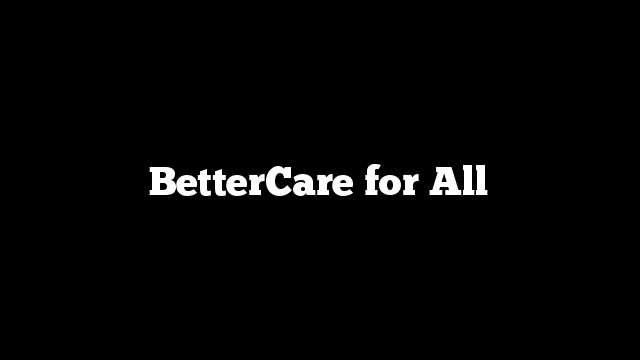
By ROBERT M. HERZOG
The Cure for healthcare isn’t Medicare for All, it’s establishing organizations with complete responsibility for the total care, costs, quality and outcomes for a person.
Discussions of Medicare for All substitute structure for substance. They engender a debate about the trappings of care delivery, administration, and cost, but don’t address the fundamental issue, which is how to provide genuinely better care for people of all ages and economic circumstances.
The premise of Medicare for All is that a single payer will provide better and more cost effective care. But what is really needed is single entity accountability. Whether there are one or many, whether they are public or private, is not as important as that one organization and its people become responsible for the total health and care of an individual and the costs associated with that care. With incentives for doing it well, and penalties for doing it poorly. And an ease of transition for people to move from an entity that doesn’t serve them well to one that does, to maintain the benefits of competition and varied approaches based on differing conditions.
Focusing on Medicare for All promulgate a systemic flaw baked into our health insurance and provider systems. High costs and lower quality can’t just be fixed by a single payer negotiating lower drug prices, nor would providing fewer services mean better care at lower costs. The core problem is exemplified by the invidious arbitrary split in public health insurance between Medicaid and Medicare, with each providing different services spread out among many providers, none of whom have sole responsibility for the complete health of the person.
BetterCare for All need not be a win-lose proposition, of Medicare for All or nothing. The feasibility near term of a one payer system is low, whereas the feasibility of building on existing systems and frameworks to create single system accountability is much higher.
Single accountability addresses the structural flaws in the US health system, which have positioned the US to have the highest costs for healthcare in the world while ranking 11th (last place among developed nations) in the quality of care, with all the negative quality of life implications that implies.
Whether it’s Medicare, a form of Medicaid, or private insurance, unless a single entity oversees the care of a person across the so-called care continuum — home, office, hospital, facility — and the levels of reimbursement and pay are adjusted by the quality of care and outcomes of that person, the systemic problem of high costs with poor outcomes, and lack of access, will remain in place.
Health care provision is often well described as being in silos, or buckets. For example, when an enrollee in a Medicaid program has to go to a hospital, the Medicaid plan’s responsibility, oversight, even patient information, stops. Similarly, while many Medicare recipients could benefit from services in the home, Medicare doesn’t cover most of them. The same individual is arbitrarily — one should say absurdly — carved up into different components for care services. The results from this lack of coordination are severe. Estimates of excess costs stemming from lack of coordination range from $45 billion annually on up.
Our fractured system embeds structural conflicts among the major parties, to the detriment of the patient. Insurers are called payers, which sums up their primary function and the limit of their mandate, which has little to do with actual care quality. Under fee-for-service models, their incentive is to limit services provided and the costs of those services. Recently a branch of UnitedHealth Group, a huge payer, that administers treatment and addiction services for insurance plans was found to have violated its fiduciary duty under federal law by using overly restrictive guidelines and adopting financial incentives intended to restrict access to care, reflecting the perverse incentives of what should be a system promoting care, not limiting it.
Fee-for-service providers, on the other hand, want to maximize services to generate revenues, and make up in volume for the discounts they have to offer to obtain payer clients. Hence the frequent accusations of in effect churning tests and procedures, inflating costs well beyond what are necessary.
Under so-called alternative payment models, such as value-based payments, the payer shifts the burden of total cost to a provider, giving them a single, capitated rate for the set of services they provide. That of course encourages minimizing services and their related costs, with adverse impact on patients. Hospitals and large plans in turn attempt to slough off their obligations under value payment models by shifting the burden of performance to practitioners or agencies.
That structure causes a lack of alignment between who could institute improvements, such as the introduction of new technologies, and who might benefit from their use. A home care agency might be best suited to provide better technology to gain and use information about the patient in the home, but they do not benefit financially from better outcomes and so have no incentive to bear the costs of the technology.
In a recent briefing on meeting cost reduction goals for NY State’s Value-Based Payment program by its Dept. of Health, healthcare plans were specifically told to only address Medicaid payments, and not Medicare. Why? Because states pay for Medicaid, but the feds pay for Medicare. i.e., when it comes to Medicare management, the state doesn’t care! Yet the high costs and quality imperfections of our system reside as much in Medicare as Medicaid.
Medicare for All also posits an increasingly central role for hospitals in the care infrastructure. But hospitals are not well-suited to be the organizations that provide comprehensive care management. Hospital cultures, skills, staffs, training, are all built around taking care of people in the hospital. And while hospital executives might howl in protest, the simple fact is that hospitals are ill-equipped to deal with people outside their four walls, to be purveyors, or even monitors, of home and community based services. They have historically evinced little interest in doing so, and even now, with various incentive and penalties in place to try to force them to look to care in the community, they don’t do it at all or very well.
Integrated health systems, such as Kaiser, are better situated to do so. Within those systems hospitals focus on being better hospitals, nested within an administrative superstructure that manages care — and equally importantly costs — across all stages of a person’s care life. Establishing such networks or comparable managed care organizations would do more and more quickly than trying to shoehorn hospitals into a central care management role they can’t fulfill.
A recent study from the University of Colorado Anschutz Medical Campus found that
60% of home health workers say they lack adequate patient information from hospitals to inform care, often leaving patients unprepared for treatment. Another study found that 94% of patients had at least one medication discrepancy when comparing referring provider and home health care medication lists. These problems persist, and won’t be solved by trying to change hospitals’ “personalities.”
The nation funded tens of billions of dollars to underwrite electronic health records in the abstract belief that improving the storage and access to care information would in turn have a salutary effect on care quality. Only the disparate EHRs installed in hospitals and provider systems don’t talk to each other, nor do they include effective gathering and use of information about patients where they spend most of their time, in the home or other non-clinical settings beyond the scope of EHR data collection.
Attempts to fix these issues are perforce piecemeal, since they simply mirror dealing with the different spokes of care one at a time rather than building a central hub of care management and responsibility. Various programs that try to connect some of the dots between Medicaid and Medicare still leave large gaps in between, as have those which seek to reduce avoidable hospital readmissions that cost an estimated over $30 billion a year, year after year.
Enormous strides and cost savings while improving quality can be obtained by more inclusion of information from and services in the home, where people spend the bulk of their time and where many health problems originate. Discerning these problems in a timely fashion can prevent deterioration, provide lower cost treatment options, and enable people to remain where they most want to be.
But the orientation of hospitals and providers has been to ignore the home in favor of the more costly and burdensome options of hospital, emergency room, office, and nursing home. Study after study indicates the enormous costs from poor coordination among many providers; a single entity tasked with managing the entire care of the individual, including their home, is the best solution to getting universal coverage at an affordable price.
In my former position as Director of New York City’s Energy Office, we instituted energy conservation programs with measures from swapping lightbulbs to upgrading insulation and HVAC systems which paid for themselves in 1–2 years. But there is no concept of payback in healthcare. What organizations hear is, “we have to pay for something now,” without doing the math as to the benefits over time such investment can yield, operating within an infrastructure that doesn’t incentivize them to make such calculations.
Our health care system suffers from the artificial separations of services to people — Medicare and Medicaid, between payers and providers, the isolation of home and community services from institutional ones. The cure lies in connecting these elements with strong bonds under the management of a single entity charged and familiar with the total life of the person we call a patient, but who is far more than that.
Robert M. Herzog has been an entrepreneur and consultant in technology, media, finance, and healthcare, most recently as founder and CEO of eCaring, Inc. This post originally appeared on Medium here.
The post BetterCare for All appeared first on The Health Care Blog.
